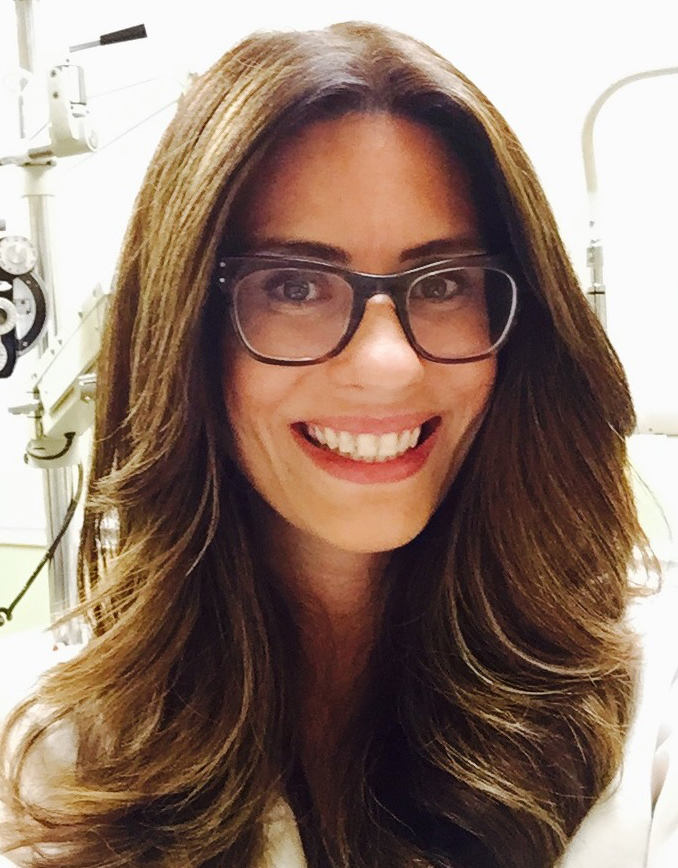By Courtney L. Case, OD, FAAO, RYT

June 28, 2017
A key to building a profitable practice is being able to perform highly as an OD and business person. The pressures of caring for patients, and maintaining a business, can zap a doctor’s energy levels, and the day-to-day physical strains of seeing patients, such as repetitive motions in the exam room, also can be challenging.
The solution for me has been yoga. It has strengthened both my mind and body, allowing me to focus more effectively on my patients, and to feel greater physical energy and comfort. I currently practice as a freelance optometrist at two hospitals, which allows me to take the total wellness perspective of yoga, and work with other health-care specialists, to benefit the patient.
I have been practicing yoga on and off for about 15 years, but over the last three years, began a consistent biweekly practice. The motivation to increase my yoga began from a desire to maintain optimal physical health. In the process, I found a natural inclination to feel more engaged in life.
The pace of life had been moving at a rate that I could not keep up with, but through yoga and meditation, I was able to slow things down and become more present in each moment. My dedication grew as I saw a positive impact on all areas of my life, most especially in seeing patients. A biweekly practice of yoga quickly transitioned into a daily one, with me doing yoga every day after work. I then became certified as a yoga instructor this past year.
Improve Body & Mind–and Patient Care
As a profession, we are either hunched behind the slit lamp, sitting in front of a computer, or leaning over patients to instill drops. After close to a decade as an OD, I noted a slouched posture and chronic lower-back pain. Poor posture had become an ingrained habit with extension into all facets of my life. Yoga has substantially improved my posture by lengthening my spine and creating space for deeper breathing. Not only have my back pains reduced, but my energy levels have improved from the combined benefits of yoga and deep breathing. I now have vitality throughout the day.
Yoga is, by definition, the union between body and mind. While seeing patients, I now have the focus to stay present during an exam without worrying about getting to the next patient, or staying on time. This focus allows for greater productivity because my mind is not wandering or anxious. I have more patience, take my time, and ultimately, provide better care.
For example, I am able to listen more attentively to a patient’s lifestyle needs. When they tell me a winding story about their close computer work, and outdoor hobbies, I am able to concentrate fully, offering eyewear solutions to meet all of their needs. And I hear, and remember, to alert them to potential risks to their eyes, and overall health, given their family history.
Communicate a Total Wellness Message to Patients
Optometry is a specialty, but the eyes reflect a patient’s overall health, with diseases like diabetes sometimes detected during routine exams. Therefore, we have a vital role in our patient’s well-being.
I have found that the modern total wellness approach, in which I co-manage with other health-care providers, ties well into the perspective yoga has taught me. The team-work approach to health care facilitates a capacity for practitioners to care for the overall well-being of patients. Yoga aligns with this philosophy of caring for the person as a whole, rather than with a narrow focus on specialized care. Our patients’ health benefit from this holistic approach, which is further enhanced with the practice of yoga for both stress management and physical health benefits. Patients are always grateful for my wellness advice, which strengthens the relationship of trust between the patient and myself.
Choose a Physical Activity that Works for You
Not everyone is drawn to yoga, but it’s important that you choose a physical activity of some kind. As doctors care for patients, they often forget to care for themselves.
In the hospital setting, where I practice, most of us are not able to take an adequate lunch. Bookings for patient care are substantial, and providers cannot finish on time. This is a growing problem as reimbursement rates from insurance carriers continue to dwindle, and practitioners are required to see increasing quantities of patients with an impact on the quality of care for both patients and practitioners’ self-care.
All physical activity results in the release of neurotransmitters as a response to stress. These hormones return to baseline after the cessation of activity. In contrast, prolonged emotional stress triggers a sustained hormonal response that remains turned on, and depletes our stores of neurotransmitters. The result is reduced cognitive function.
Physical activity of any kind is a healthy way to regulate this hormonal response to stress. The result is increased reserves of neuro-chemicals that help the brain communicate with the body.
I have benefited from yoga as a tool to maintain this delicate balance. However, martial arts or routine cardiovascular workouts are effective alternatives.
The key: Finding the exercise that allows you to relieve stress and benefit your physical health, giving you the strength and focus to improve patient care and your own health.
What physical activities have you found most helpful in reducing stress, and improving your physical health? How does keeping in shape, and keeping stress levels low, enable you to be a better doctor?
 Courtney L. Case, OD, FAAO, RYT, is an attending optometrist for Long Island Federally Qualified Health Centers, a division of Nassau University Medical Center in East Meadow, NY., and Bedford Stuyvesant Community Health Center in Brooklyn, NY. To contact: caselynn9@yahoo.com
Courtney L. Case, OD, FAAO, RYT, is an attending optometrist for Long Island Federally Qualified Health Centers, a division of Nassau University Medical Center in East Meadow, NY., and Bedford Stuyvesant Community Health Center in Brooklyn, NY. To contact: caselynn9@yahoo.com



























